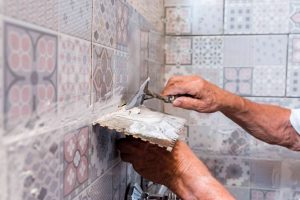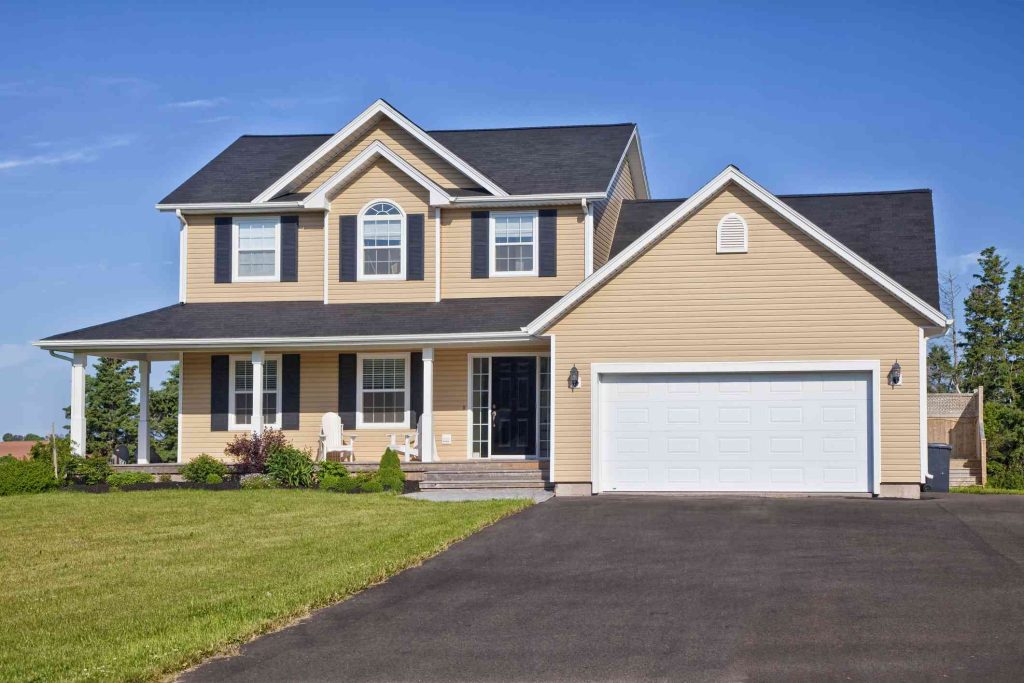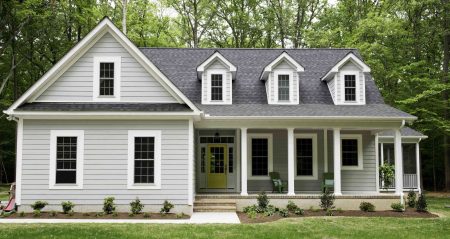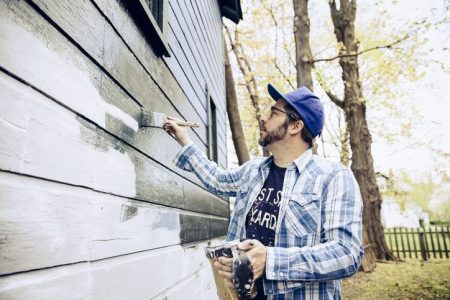Vinyl siding consists of two layers of strong, flexible material, installed over foam insulation. This prevents moisture from seeping into the house, but also reduces the transfer of heat through the walls, increasing the energy efficiency of the home.
On average, vinyl siding will last about 30 to 40 years. However, with frequent care and attention, vinyl siding can last over 60 years before it needs to be replaced. Use this guide to learn what signs may indicate the vinyl siding needs to be replaced and to find out how long vinyl siding lasts.
When to Replace Vinyl Siding
Vinyl siding will generally last about 30 to 40 years with semi-frequent cleaning and minor repairs. Over time, direct sunlight can cause the vinyl siding to fade, stiffen, and crack, so it’s a good idea to paint the vinyl siding to protect it from UV radiation. If you paint the vinyl siding, then it should be repainted about once every five to 10 years.
Paint can also help to prevent moisture from entering the home, but it isn’t a fix for every siding problem. Take some time at least once a year to inspect the vinyl siding for signs of wear and tear, like warped boards, cracks, bubbles, holes, rot, or loose boards. Minor damage can typically be repaired by replacing the affected siding boards, but when the damage is too extensive or the siding is showing significant signs of wear after decades of use, then it’s time to update the exterior siding for the home.
5 Signs Vinyl Siding Needs to Be Replaced
Rot
Vinyl siding won’t rot, but if there are cracks, holes, or gaps in the siding then water may be able to seep through to the wood underneath. When this occurs, the moisture can damage the wood, leading to rot. Other signs that can point to moisture problems include mold, warped boards, cracked vinyl panels, peeling interior paint, or loose exterior boards.
Holes
One of the main reasons to install vinyl siding is that it is a flexible, durable material that can hold up in extreme weather. However, vinyl siding is still vulnerable to damage from insects, rodents, and other pests. Holes in the vinyl siding can indicate that ants, beetles, termites, mice, rats, or even squirrels have chewed through the siding. Take steps to repair the problem by replacing damaged vinyl boards and sealing any holes or gaps.
Fading
You can purchase vinyl siding in a wide range of colors, but over time the color can fade due to rain, snow, ice, and UV radiation. If you notice the exterior siding is fading significantly, this may indicate that the vinyl is reaching the end of its lifespan.
Warped or Broken Boards
Vinyl siding can get damaged by high winds, ice, or hail storms. One or two damaged vinyl siding boards can be replaced relatively easily, but when there is extensive damage to the exterior of the home, it’s a good opportunity to upgrade the vinyl siding for the entire house.
Increased Utility Bills
Vinyl siding helps to keep heating and cooling costs down by insulating the walls of the home. However, if the exterior siding is damaged, worn, warped, or loose, then you may see an increase in the utility bills. This is a sign that the siding needs to be repaired or replaced to restore the energy efficiency of the home.
Repairing vs. Replacing Vinyl Siding
Replacing the vinyl siding for the entire home is an extensive project, but not all problems require a full upgrade of the siding. Minor issues can typically be fixed by removing and replacing one or two vinyl boards, while leaving the rest in place.
To determine if you need to upgrade the entire exterior siding for the home or just repair a few broken pieces, first view the home from the street, then inspect the siding carefully for less noticeable problems. If you see significant signs of fading, several missing panels, or extensive damage that is visible from the street, then the vinyl siding should be updated for the entire home.
However, if there is minor fading, small holes, dents, or minimal damage, then you can likely resolve the problem by repairing the damaged panels, filling the dents, and painting the siding to restore the color.
Lifespan of Other Siding Types
Vinyl siding isn’t the only exterior siding material available for home renovations. You can also install aluminum, wood, steel, or fiber cement on the exterior of the home, all of which have different lifespans.
- Vinyl siding is inexpensive, easy to use, and it will last about 30 to 40 years on average.
- Aluminum siding is a lightweight option with a high level of durability. It lasts about 20 to 40 years before needing to be replaced.
- Wood siding will need to be repainted about once every three to five years to protect it from moisture and UV radiation. As long as you keep up with maintenance, wood siding can last about 20 to 40 years.
- Steel siding has a similar life expectancy as aluminum, though it can typically hold up better against rain, wind, sleet, ice, UV radiation, and snow. Expect to replace steel siding about once every 30 to 40 years.
- Fiber cement is a low-maintenance, highly durable choice that can last longer than most other exterior housing materials. If you install fiber cement now, then you likely won’t need to worry about it during your lifetime because fiber cement can last more than 100 years without significant issues.
Read the full article here














